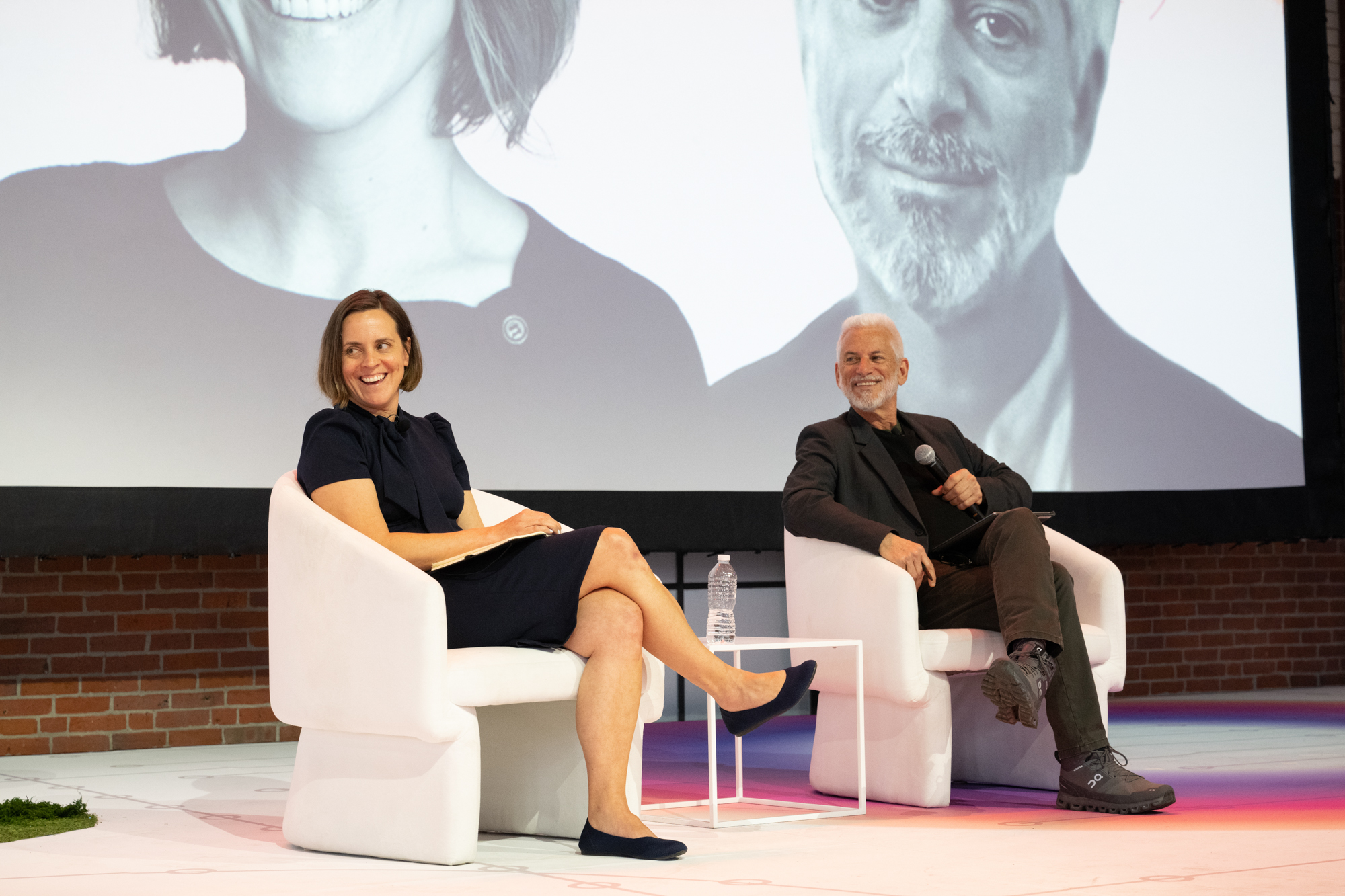In March 2022, President Joe Biden created the Advanced Research Projects Agency for Health, or ARPA-H, an agency tasked to drive breakthroughs in biomedicine.
The idea dates back to 2016, when businessman Bob Wright founded the Suzanne Wright Foundation in honor of his late wife who died from pancreatic cancer. They proposed creating HARPA — a new federal agency modeled after DARPA, which advances technologies for national security. HARPA was meant to move the needle on pancreatic cancer. Over the past few years, their proposal has garnered support from lawmakers and scientists, and the scope has expanded to diseases like Alzheimer’s, diabetes, and cancer.
ARPA-H, a disease agnostic organization, aims to accelerate the timeline for state-of-the-art detection tools, treatments, medical devices, and cures to go from the lab to the patient. Their bread-and-butter is “high-risk research” — which often falls through the cracks because it is simply too costly for academia or industry to foot the bill for therapeutics that only treat a small portion of the population.
Under the leadership of its inaugural director, Renee Wegrzyn, ARPA-H is recruiting the most innovative biomedical minds to their ranks and turning to the public for ideas on which crucial health outcomes they should fund. (Wegrzyn formerly served as Ginkgo’s Vice President of Business Development.) But what does it actually look like to scale up such an agency, and invest in the health of all Americans? It will take the coordinated efforts of movers and shakers from every sector of the biomedical community to realize those multi-million dollar ideas that could improve health outcomes for all.
On April 19, 2023, at Ginkgo’s annual Ferment conference, Michael Specter, staff writer for The New Yorker, spoke with Renee Wegrzyn about how the “DARPA for Health” plans to live up to its bold mission.
Last week you told me, “I don’t want people to give me small proposals. I’m looking for something substantial.” So what is the mission of this new organization? I’ve heard of DARPA — is this the health version?
RENEE WEGRZYN: Our mission at ARPA-H is to accelerate better health outcomes for everyone, period. We’re only an investment agency, we’re not brick and mortar labs. So we’re asking: What can our funding accelerate to actually improve people’s lives and standard of care? And health outcomes are how we’re going to measure our progress.
DARPA was launched in response to Sputnik. We don’t have a specific Sputnik moment for ARPA-H, but there’s energy around innovation, and this urgency around crises. That’s the urgency with which we’re trying to achieve these goals.
ARPA-H is a bottom up management system, which is unusual. How does that work?
We’re hiring people with big ideas in health that they want to solve. That’s how it works. If you have a great idea in engineered gut microbiomes, then for that to be a program at ARPA-H, we need to have a program manager working on that concept.
The application process for these program managers involves framing their problem with the Heilmeier questions, which we adopted from DARPA: What problem in health are you trying to solve? How’s it done today and what’s new in your approach? What are the risks — how much is it going to cost and how long is it going to take? And what are your milestones for progress?
At ARPA-H, we’ve added two additional questions: How are you going to address cost, accessibility, and user experience? It’s key that we develop devices and therapeutics that people actually enthusiastically want to adopt, and don’t sit on a shelf. And how might this program be misunderstood or how might misinformation be created around this wild new technology?
How are you prioritizing which projects and health areas to target?
It’s a really great time at ARPA-H because we don’t have to fit into an existing portfolio, we’re building that from scratch. And so it’s important that we have a very clear diversity of projects. We’re not saying we’re looking for Project X right now. We may be in two or three years, once we start to have a portfolio. But now it could be anything from fundamental research projects, to things that are almost ready to go into the clinic. Importantly, we’re focused on those high risk projects that NIH won’t take on, HHS won’t take on, and also, frankly, industry can’t take on.
What are some of the ideas in synthetic biology that might be good programs?
We’re really excited to work with the synbio community. I’m a big believer that this is the century of bioengineering and biotechnology.
We’ve established four technical focus areas. These aren’t meant to be prescriptive, but they’re areas in health we think further investment will advance the state of the art.
One is Health Science Futures: the tools, technologies, and platforms of the future, whether it’s mammalian cell engineering, or the next mRNA platform, that can address a number of diseases. We are a disease agnostic organization, but we really want to advance the state of the art for all of those projects.
Scalable Solutions: When you’re going from 10 doses to a billion doses of something, there are lots of synbio opportunities there. And then there’s the scale of meeting the American people where they’re at. There are more and more rural healthcare centers closing, so how are we getting things to people’s homes so that we can actually deliver care?
Proactive Health, or simply keeping people from becoming patients in the first place. So diagnostics, detection, behavior, and social science projects are going to be important.
The last, Resilient Systems, is systems level integration. There are many, many technologies today in silos. What if we integrated them and added a machine-readable data layer, so that we can advance the state of the art? These are the types of investments and focus areas that we’ve laid out.

Along those lines, I’m wondering how you see AI merging with synthetic biology and healthcare. Is that going to be an important part of what you fund?
Think about if every program had machine-readable data that’s open access where appropriate. That doesn’t really exist at scale, and we can build it in from the beginning. But it’s important to mention that if the AI data sets are not diverse, and they’re only representing white urban populations, then we might be optimizing for those populations. So how do we get the other data and reach everyone else? That’s the challenge of working with AI, but I’m excited to see what applications come out of it.
ARPA-H will have three sites across the country. How will those locations factor into the agency’s operation?
No three geographies really represent all Americans. So what we decided to do is a hub and spoke model, where we use those sites strategically to graduate programs out of ARPA-H that access the customers we need to reach. We want to make sure our customers are diverse and they represent the groups that are most impacted by these diseases. If you do a map of where chronic diseases are in our country, and then you do a map of biotech centers, those maps don’t overlap. So how do we get to those places that really need it the most? We’re holding our program managers to it. They have to be able to recruit clinical trials in those areas, work with those communities, so that they even want to be a part of that trial.
We’ll have a Washington, DC site — a stakeholder and operations hub — but the others are being competed for right now. We’ll have a hub site that’s devoted to customer experience, which will pull in spokes so that we get a patient population that’s representative of those we’re there to serve. That will allow us to work in all different geographies.
Layered on top of this, coming back to AI, we’ll have a data layer so that we don’t have to start from scratch every time we start a program or fund a clinical trial — the system can be a smart innovation hub.
“Success will also be if we fail.”
What are you looking for in a program manager?
We’re looking for folks who are an expert in their field, whatever that field is, or who have a willingness to totally reinvent themselves and jump to another field. So we want to hire people who very actively manage a team and funds. We need people who are decisive, who are not afraid to take risks and are willing to move quickly.
And they can be early career; they can be mid-career — they’re tired of the status quo and they want to change the course of their field, and then go back and continue their work; or they can be late career — they have seen the problem so clearly, and they’re not afraid to take a career risk.
You have these truly great ambitions. But I look at some moonshot industrial proposals — like Google X’s moonshots, some of them have sort of worked, lots haven’t. What does success look like for you?
In the near term, success is getting our authority so we can make decisions. And we’ve done that.
The 20 program managers that I hope to hire this year should represent 20 totally different projects that really start to unlock the imagination of what ARPA-H can catalyze. And three years from now, our portfolio should look totally different. That will be success for us.
And this is going to sound a little funny, but success will also be if we fail. We have to have room to fail. That means that we’re taking those moonshots. We want to be very transparent in those failures and learn from them as we go forward.
This conversation has been edited for length and clarity.



